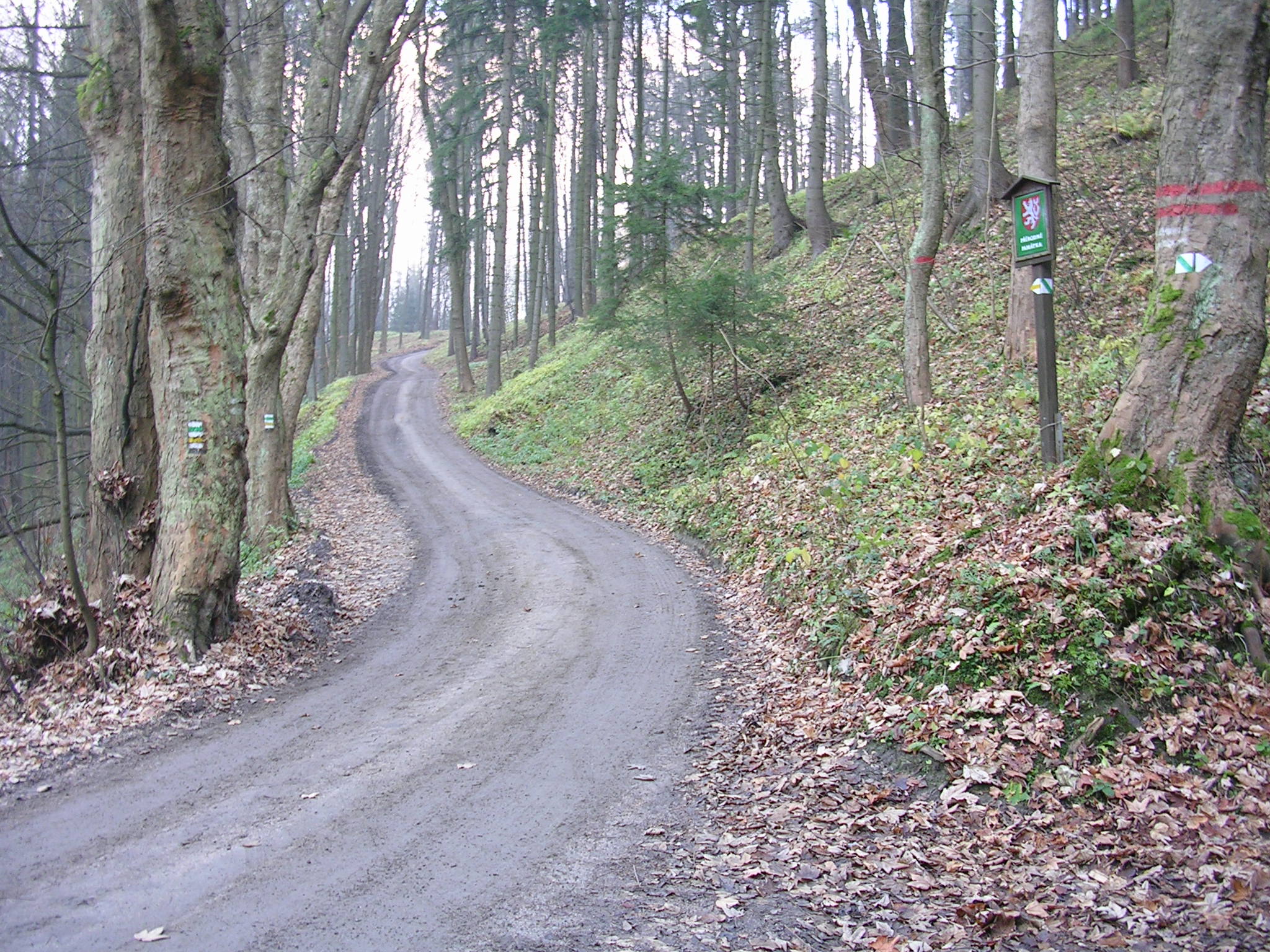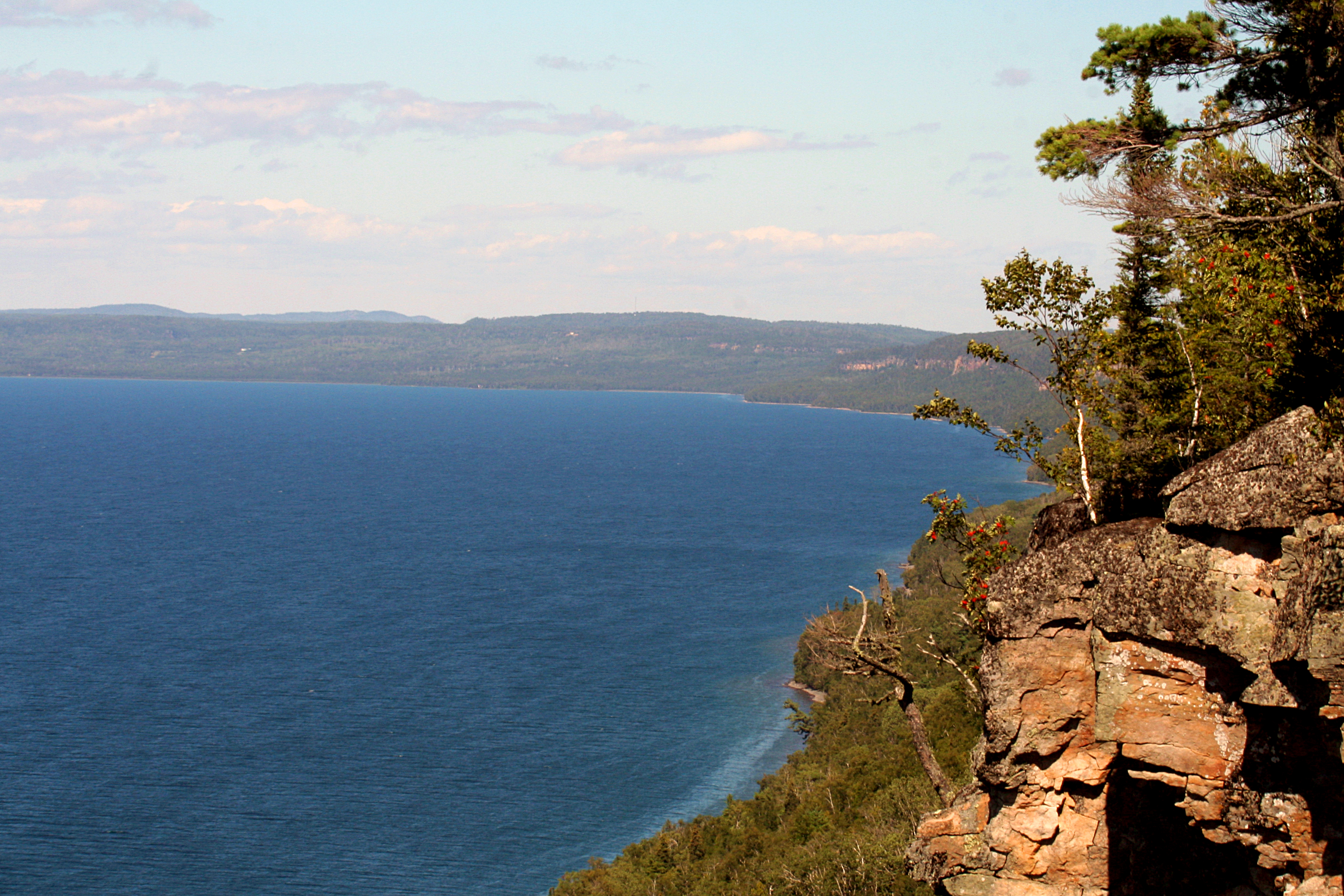|
Ontario Highway 811
Tertiary Highway 811, commonly referred to as Highway 811, is the longest of Ontario's tertiary highways, and the highest posted route number in the province. The route encounters no named roads along its route, aside from its eastern terminus at Secondary Highway 527. It extends westward into the wilderness, ending at a bridge over the Weaver River. The route was designated in 1976 with the intention of extending it further west, but this extension has yet to be constructed. Route description Branching off from Secondary Highway 527, roughly halfway between Thunder Bay and Armstrong, Highway 811 is Ontario's highest numbered route, but also one of its most remote. Aside from its beginning, the highway connects with no named roads along its length. The route begins approximately midway along Highway 527, north of Ontario Highway 17 and south of Armstrong, It zig-zags northwestward for towards Savant Lake, although as of 2011 the road reaches less than halfway there. It cr ... [...More Info...] [...Related Items...] OR: [Wikipedia] [Google] [Baidu] |
Boreal Forest
Taiga (; rus, тайга́, p=tɐjˈɡa; relates to Mongolic and Turkic languages), generally referred to in North America as a boreal forest or snow forest, is a biome characterized by coniferous forests consisting mostly of pines, spruces, and larches. The taiga or boreal forest has been called the world's largest land biome. In North America, it covers most of inland Canada, Alaska, and parts of the northern contiguous United States. In Eurasia, it covers most of Sweden, Finland, much of Russia from Karelia in the west to the Pacific Ocean (including much of Siberia), much of Norway and Estonia, some of the Scottish Highlands, some lowland/coastal areas of Iceland, and areas of northern Kazakhstan, northern Mongolia, and northern Japan (on the island of Hokkaidō). The main tree species, depending on the length of the growing season and summer temperatures, vary across the world. The taiga of North America is mostly spruce, Scandinavian and Finnish taiga consists of a m ... [...More Info...] [...Related Items...] OR: [Wikipedia] [Google] [Baidu] |
Unorganized Thunder Bay
Unorganized Thunder Bay District is an unorganized area in northwestern Ontario, Canada in Thunder Bay District. It comprises all parts of the district that are not part of an incorporated municipality or a First Nations reserve. Most of the territory is within the Eastern Time Zone, but the part west of the 90th meridian is in the Central Time Zone. Geography Communities with Local services board *Armstrong * East Gorham * Hurkett * Kaministiquia *Lappe *Rossport *Shebandowan Other communities *Auden *Burchell Lake *Collins * English River (on boundary with Kenora District) * Finmark * Flindt Landing *Harvey *Hemlo *Heron Bay * Kashabowie * Melgund *Nolalu *Ombabika *Pays Plat * Raith *Savant Lake *Shabaqua *Shabaqua Corners *Silver Islet * Silver Mountain * Staunton *Sorrell Lake *Suomi * Upsala History Gold was noted in the area since 1869, but it wasn't until Peter Moses from Heron Bay, Ontario discovered additional gold that prospectors flocked to the area. In 194 ... [...More Info...] [...Related Items...] OR: [Wikipedia] [Google] [Baidu] |
Forest Road
Forest tracks or forest roads are roads or tracks intended to carry motorised vehicles or horse-drawn wagons being used mainly or exclusively for forestry purposes, such as conservation or logging. Forest tracks may be open to ramblers or mountain bikers depending on local rules. Description Forest roads may be tarmacked, gravelled or metalled (using hard core) and often have restrictions on use. In many regions the establishment of forest roads is not only subject to approval under forest management law, but also conservation law. in Tyrol retrieved 28 June 2010 In and other especially important conservation areas, forest roads and tracks are generally ... [...More Info...] [...Related Items...] OR: [Wikipedia] [Google] [Baidu] |
Lake Nipigon
Lake Nipigon (; french: lac Nipigon; oj, Animbiigoo-zaaga'igan) is part of the Great Lakes drainage basin. It is the largest lake entirely within the boundaries of the Canadian province of Ontario. Etymology In the Jesuit Relations the lake is called lac Alimibeg, and was subsequently known as Alemipigon or Alepigon. In the 19th century it was frequently spelled as Lake Nepigon. This may have originated from the Ojibwe word ''Animbiigoong'', meaning 'at continuous water' or 'at waters that extend ver the horizon' Though some sources claim the name may also be translated as 'deep, clear water,' this description is for Lake Temagami. Today, the Ojibwa bands call Lake Nipigon ''Animbiigoo-zaaga'igan''. The 1778 ''Il Paese de' Selvaggi Outauacesi, e Kilistinesi Intorno al Lago Superiore'' map by John Mitchell identifies the lake as Lago Nepigon and its outlet as F. Nempissaki. In the 1807 map ''A New Map of Upper & Lower Canada'' by John Cary, the lake was called Lake St Ann or Win ... [...More Info...] [...Related Items...] OR: [Wikipedia] [Google] [Baidu] |
Ministry Of Transportation Of Ontario
The Ministry of Transportation (MTO) is the provincial ministry of the Government of Ontario that is responsible for transport infrastructure and related law in Ontario. The ministry traces its roots back over a century to the 1890s, when the province began training Provincial Road Building Instructors. In 1916, the Department of Public Highways of Ontario (DPHO) was formed and tasked with establishing a network of provincial highways. The first was designated in 1918, and by the summer of 1925, sixteen highways were numbered. In the mid-1920s, a new Department of Northern Development (DND) was created to manage infrastructure improvements in northern Ontario; it merged with the Department of Highways of Ontario (DHO) on April 1, 1937. In 1971, the Department of Highways took on responsibility for Communications and in 1972 was reorganized as the Ministry of Transportation and Communications (MTC), which then became the Ministry of Transportation in 1987. Overview The MTO is in ch ... [...More Info...] [...Related Items...] OR: [Wikipedia] [Google] [Baidu] |
MapArt
The MapArt Publishing Corporation is a Canadian cartography publisher founded in 1981 by Peter Heiler Ltd. that produces and prints yearly editions of maps for Canada and the United States. Headquartered in Oshawa, Ontario, MapArt is Canada's leading map publisher, producing more Canadian titles than any of its competitors and all settlements with a population over 5000 in Canada are covered in various editions. Its signature yellow cover is seen throughout the country at filling stations, convenience store A convenience store, convenience shop, corner store or corner shop is a small retail business that stocks a range of everyday items such as coffee, groceries, snack foods, confectionery, soft drinks, ice creams, tobacco products, lottery ticket ...s, and general merchandising stores. MapArt Publishing grouped up with Rand McNally Maps and JDMGEO Maps, to create CCC Maps in 2013 but returned to publish under the MapArt banner in 2014. References External links Officia ... [...More Info...] [...Related Items...] OR: [Wikipedia] [Google] [Baidu] |
Savant Lake, Ontario
Savant Lake is an Unincorporated area#Canada, unincorporated place and community in Unorganized Thunder Bay District, Unorganized Thunder Bay District in Northwestern Ontario, northwestern Ontario, Canada. History Town was originally named after a civil engineer in charge of building the railroad, Bucke. In 1928, another town of the same name was discovered in Ontario, Canada. At that time, the name of the lake north of the town, Lake Savant, became the town's official name. In 1901, Gold was discovered on Lake Savant. Therefore, in 1905, the Saint Anthony Goldmine located south of the town opened. It serviced the town until it was closed in 1941. In 1913, CN Savant Lake railroad station was built. Until 1959, the main form of transportation was dog teams until Ontario Highway 599 was completed. In 1973, Hydro (electricity) was brought in. Transportation Savant Lake is on Ontario Highway 599, roughly halfway between Ignace, Ontario, Ignace and Pickle Lake. The community is al ... [...More Info...] [...Related Items...] OR: [Wikipedia] [Google] [Baidu] |
Thunder Bay District
Thunder Bay District is a district and census division in Northwestern Ontario in the Canadian province of Ontario. The district seat is Thunder Bay. In 2016, the population was 146,048. The land area is ; the population density was . Most of the district (93.5%) is unincorporated and part of the Unorganized Thunder Bay District. History Thunder Bay District was created in 1871 by provincial statute from the western half of Algoma District, named after a large bay on the north shore of Lake Superior. Its northern and western boundaries were uncertain until Ontario's right to Northwestern Ontario was determined by the Judicial Committee of the Privy Council. Until about 1902 it was often called Algoma West from the name of the provincial constituency established in 1885. The following districts include areas that were formerly part of Thunder Bay District: * Rainy River, created in 1885 * Kenora, created in 1907 from Rainy River District * Cochrane, created in 1921 Subdivisio ... [...More Info...] [...Related Items...] OR: [Wikipedia] [Google] [Baidu] |
Ontario Highway 17
King's Highway 17, more commonly known as Highway 17, is a provincially maintained highway and the primary route of the Trans-Canada Highway through the Canadian province of Ontario. It begins at the Manitoba boundary, west of Kenora, and the main section ends where Highway 417 begins just west of Arnprior. A small disconnected signed section of the highway still remains within the Ottawa Region between County Road 29 and Grants Side Road. This makes it Ontario's longest highway.See List of highways in Ontario for length comparisons. The highway once extended even farther to the Quebec boundary in East Hawkesbury with a peak length of about . However, a section of Highway 17 "disappeared" when the Ottawa section of it was upgraded to the freeway Highway 417 in 1971. Highway 17 was not re-routed through Ottawa, nor did it share numbering with Highway 417 to rectify the discontinuity, even though Highway 417 formed a direct link between the western and eastern sections of Highway ... [...More Info...] [...Related Items...] OR: [Wikipedia] [Google] [Baidu] |
Armstrong, Thunder Bay District, Ontario
Armstrong is a compact rural community, unincorporated place, and divisional point on the Canadian National Railway transcontinental railway main line in the unorganized portion of Thunder Bay District in Northwestern Ontario, Canada. The Whitesand First Nation's Armstrong Settlement is coterminous to this community. The Armstrong area is a popular tourist destination in the summer for fishing and hunting. The community is not part of an incorporated municipality, but is administered by a local services board. Armstrong is accessible via Highway 527, which extends north from Highway 11/17 near Thunder Bay. It takes about three hours to get to Armstrong by car from Thunder Bay. According to the Canada 2016 Census, the community had a population of 193, down from 220 in 2011, a decrease of 12.3%. There are 186 dwellings of which 84 are occupied by usual residents CFS Armstrong, Canadian Forces Station Armstrong, located 1.1 miles (1.8 km) east of Armstrong, was closed in ... [...More Info...] [...Related Items...] OR: [Wikipedia] [Google] [Baidu] |





